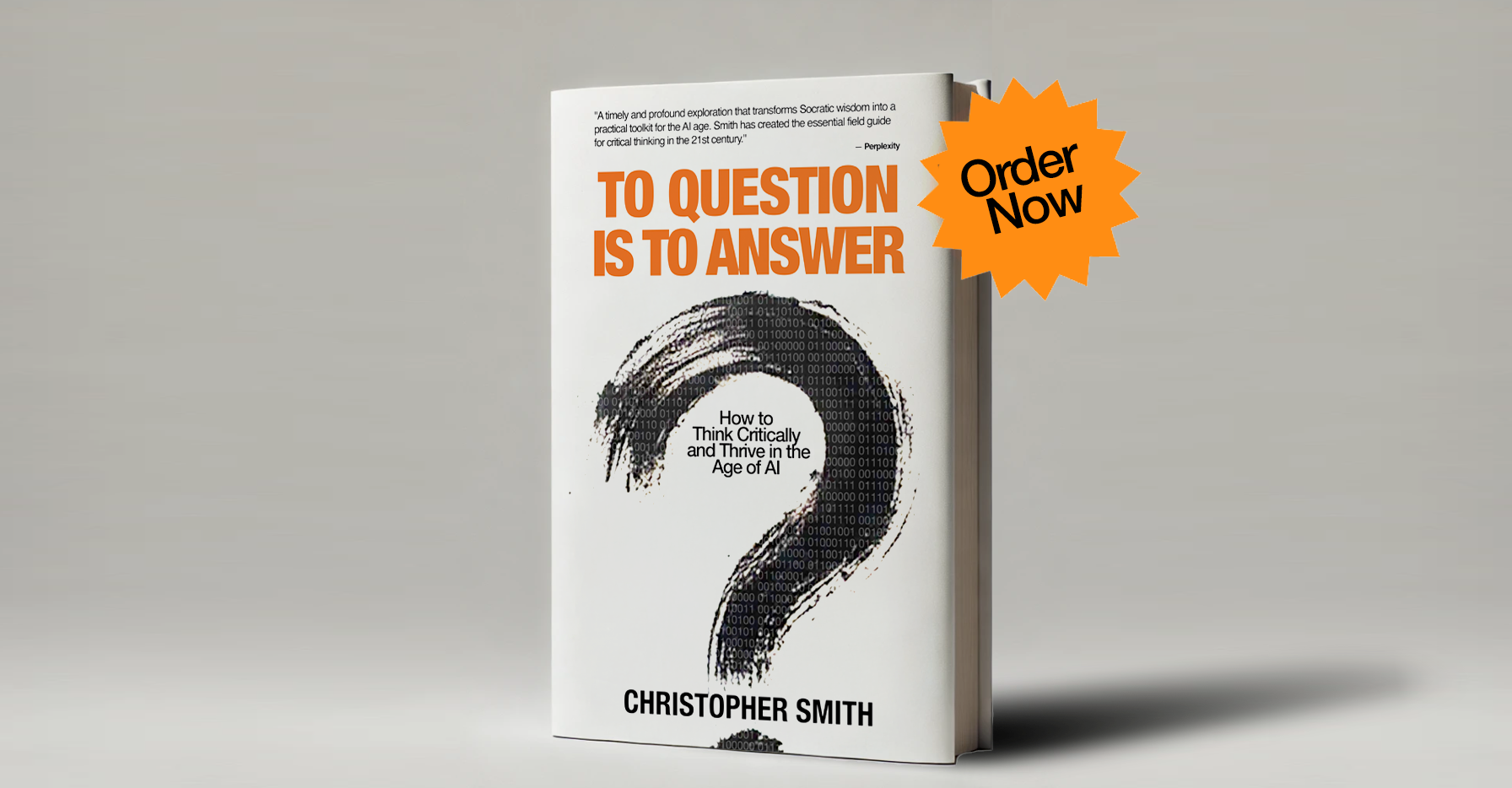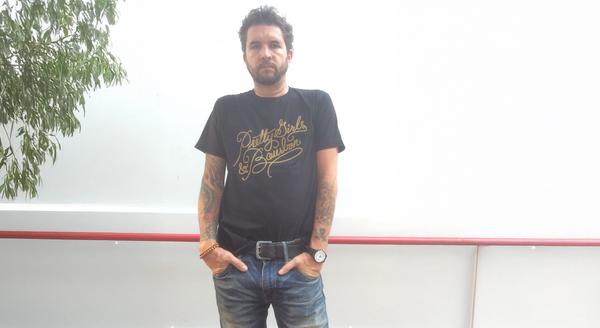The Quiet Genius of Gemini and NotebookLM
I work in the messy middle between strategy and storytelling, between brand ambition and creative execution, between humans and their machines. That means I spend most of my day hands-on with generative AI tools, trying to bridge a gap that a lot of companies are only just beginning to notice: The best tools aren’t the ones that do the most.
The most effective tools are those you use daily.
Before a recent one-on-one executive coaching session, my client said that she wants to use just one platform for the start of her GenAI journey. She had read my book, "To Question Is to Answer," and was dedicating time each day to become more proficient in how she thinks about the challenges she wants to work on with an AI tool as her thought partner.
She uses Gmail and feels comfortable with Google tools. She has used Gemini in Gmail and Docs, and used Gemini in Meets a few times. But now she was ready to “Head to the Majors,” as she put. (We share a passion for the San Francisco Giants.)
To prepare for our sessions, I decided to use only Google tools for a week. It’s a slight departure from my workflow, but it made sense that I spend more time with her tool of choice. So let me say something I don’t often say, especially not publicly.
To the Gemini and NotebookLM teams - You’ve done something special here.
Not flashy. Not theatrical. But deeply, usefully smart, in a way that respects how thinking happens. And for someone like me, who lives inside decks, documents, briefs, and mental models, that difference is everything.
NotebookLM: You had me at Hello.
I began using NBLM from the first moment it was publicly available. And it plays a very significant part in ways of working. I expect that this will continue.
Most AI tools are great sprinters. They give you something fast, sometimes useful, often shallow. NotebookLM isn’t a sprinter. It’s a long-distance partner. A researcher who remembers your sources. Working with it feels less like dictating and more like jazz. (I know, I am mixing metaphors – again.) It listens, riffs, and somehow knows exactly when not to solo.
One of my favourite ways of using NotebookLM, after the hard, deep work is done, is to generate a podcast using my finished work, listening to the key points that the LLM surfaces in the discussion. After completing my manuscript for the book on AI, I provided it as a resource, generated a podcast using NotebookLM, and then imported the audio track into HeyGen to produce a book review video podcast. (Scroll to the bottom of this page to see the podcast.)
This was driven by equal parts vanity (how doesn’t love to hear others talk about your work), but I also wanted to hear which parts of the book the LLM found to be important.
I also think that the suggested “next questions” seem to anticipate my line of thinking. I don’t use them often, usually when I hit a hesitation in my questioning, but I do like that they are there, almost as a way to pass the torch for a moment.
Another frequent way I use NotebookLM is for its eponymous Notebooks. This is where I store my project or domain-specific sources, which provide features such as source-specific citations, deep document search, and the aforementioned audio features. NotebookLM doesn’t just summarize. It cross-references. It’s as if it… understands.
I love to build a Notebook that contains the annual reports of my clients competition, and look for patterns, for movement really, across time. NotebookLM allows me to move in an out of these documents, looking for things that would take days to discover and weeks to connect.
For those of us who build thinking over time, who write, revise, and revisit, NotebookLM is the first AI tool I’ve used that treats memory not as an input field, but as an asset. It respects continuity. It rewards curiosity. It works like a strategist. Or maybe just: like me.
Gemini: The platform that understands context better than most.
Now let’s talk Gemini. Obviously, it’s the engine that powers NotebookLM, but I think about them differently.
I didn’t take Gemini seriously at first. Like a lot of us, I’d been drinking from the OpenAI firehose. But Gemini’s value isn’t just speed or polish. It’s composure.
Gemini feels like the adult in the room. It reasons calmly. It juggles inputs with grace, all in a way that quietly reinforces what Google has always been best at: information architecture.
Before I open a new Notebook, which I will do when running brand audits or executive visioning exercises, I use Gemini for what I call “structured chaos.” I give it fragments of things - screenshots, market data, emails, and ask it not just to summarize, but to spot anomalies, echo patterns, or blind spots. And I trust it to do that, not because it’s perfect, but because it feels… disciplined.
My goal here is to turn over rocks, find my bearings, and begin making sense of the world I am stepping into. It’s foreplay, really. That exploration before the main event.
The bigger play: Thought infrastructure, not just productivity tools.
Here’s where I think the real genius lies.
Gemini and NotebookLM don’t feel like tools. They feel like infrastructure. Invisible scaffolding that supports how modern thinkers operate: across time, across docs, across ideas.
That’s the play I don’t think most people see yet.
While other platforms race to be everything everywhere, Google is quietly embedding itself into the rhythm of work. Not just automating tasks, but understanding the shape of thought. And for someone like me, someone helping brands navigate the AI transition, that’s not just clever product design. It’s a worldview.
Google is betting that the future of AI isn’t just conversational. It’s cognitive. And that, to me, is the right bet.
While Claude Dreams of Cheese, Gemini Gets to Work.
I’ve worked across agencies, C-suites, start-ups, with strategy decks that stretch into infinity. I’ve built training programs for executives trying to grasp the concepts of AI. I’ve advised media companies on how to shift their workflows without compromising their core values. I’ve created AI-assisted fashion lines, brand pivots, and conversational training synthetics. And I have tried a variety of tools to do this.
But the tools that stick? The ones I come back to on a daily basis? After just one week of committing to Gemini and NotebookLM, they have become an integral part of my daily workflow.
No fuss. Just… clarity. Speed. Expansiveness. Trust.
Is it as creative as Claude? No. When I want my thought partner to tell me that the moon IS made of cheese, or I am looking for a clever, though mostly unrealistic idea that I can deconstruct, I still use Claude, because I love the creativity it presents. Hallucinations, to me are a feature, not a bug.
But when it’s time to get serious about the work ahead, I find that I have been replacing ChatGPT with Gemini and NotebookLM.
The Cookbook, The Camera, and the Client
Oh yeah, so we did have our training session. My client has multiple notebooks in use at the time of this writing. She quickly found her way of working within one platform. Her notebooks include random thoughts, subject matter notebooks, and a notebook she is using to write her first cookbook, which is a collection of recipes handed down across generations.
Our next session will explore image engineering via Imagen and Veo3. While Veo is designed for video, one way we will explore this advanced text-to-video model is to create clips of the finished recipes, taking advantage of the cinematic qualities of Veo3, and then capture the high-fidelity frames as a still image. We will also be able to use the video to help her build out her TikTok recipe channel. So two birds (roasted chickens) with one stone, so to speak.
The Quiet Genius is Real
The best AI tool doesn’t always show off. It shows up.
That’s what I’ve come to appreciate about Gemini and NotebookLM. They don’t demand you change how you work. They respect how you think. They don’t flood you with features. They earn your trust with restraint, context, and clarity.
In an industry obsessed with disruption, it’s easy to miss the power of integration. But what Google has done here isn’t just build tools; they’ve built thought infrastructure. And that’s a very different play.
These platforms aren’t chasing the spotlight. They’re earning their place at the whiteboard, in the doc, on the call, wherever decisions are made and ideas take shape.
So no, it’s not the loudest AI story of the year. But it might be the most important one. Because in the end, the tools we return to, the ones that become part of how we think, aren’t just smart.
They’re quietly brilliant.

I work with executives and teams to build real AI fluency — not just prompt engineering, but mindset, workflow, and strategic application. If you’re ready to go from experimentation to integration, let’s talk.
And if you want to dip your toes into how I think about thriving in the Age of AI, buy the book.




